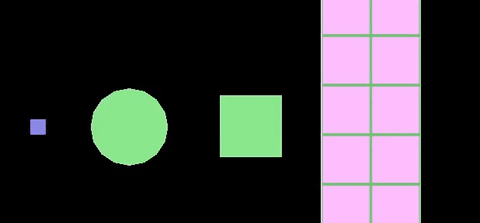Problem: No collision response or contact_point response are cast when fully inside a collisionshape created from tilemap.
Weird thing is that it works with all other shapes. So if you have 2 shapes colliding and 1 shape is fully emerged by the second one they are still triggering and giving away all data needed.
But with tilemaps they just stop and wont detect a collision at all.
Heres 3 shapes. One sphere, one box and one tilemap shape.

I understand that some data must be harder to get (normal, distance etc) but couldnt we at least send a collision_response just showing that a collision occurred?
Usecase: I try to scan my map for good spawning points that doesn’t interfer with other stuff on map. Works fins with all small gameobjects having primitive shapes but it cannot even detect blocking walls etc made by tilemaps.
